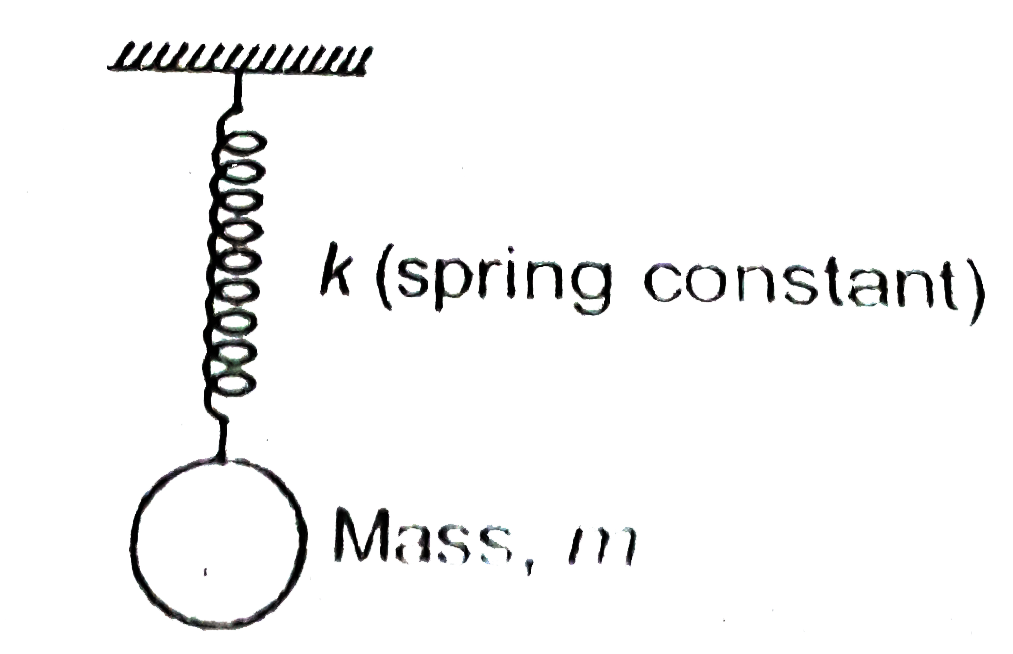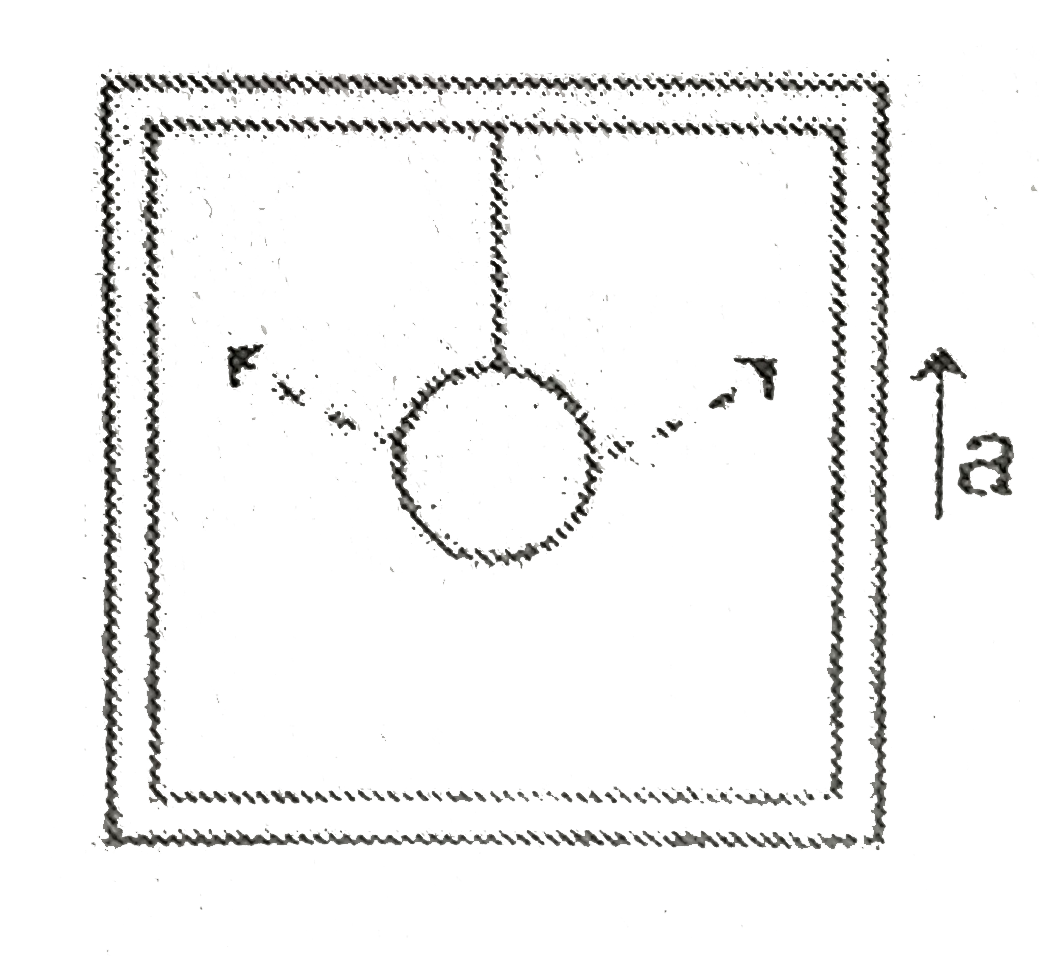A man measures the period of a simple pendulum inside a stationary lift and finds it to be T sec. if the lift accelerates upwards with an acceleration g/6, then the period of the pendulum will be
T
T4
2T√5
2T√5
The correct Answer is:C
To solve the problem of finding the period of a simple pendulum in an upward-accelerating lift, we can follow these steps:
1. Identify the Initial Conditions:
- When the lift is stationary, the period of the pendulum is given as T seconds.
- The formula for the period of a simple pendulum is:
T=2π√Lg
where L is the length of the pendulum and g is the acceleration due to gravity.
2. Determine the Effective Gravity When the Lift Accelerates Upwards:
- When the lift accelerates upwards with an acceleration of g6, the effective acceleration due to gravity (geffective) experienced by the pendulum is the sum of the gravitational acceleration and the lift's acceleration:
geffective=g+g6
- To combine these, we can express g as 6g6:
geffective=6g6+g6=7g6
3. Calculate the New Period of the Pendulum:
- The new period T′ of the pendulum in the accelerating lift can be calculated using the modified effective gravity:
T′=2π√Lgeffective=2π
⎷L7g6
- This simplifies to:
T′=2π√6L7g
4. Relate the New Period to the Original Period:
- We know that the original period T is:
T=2π√Lg
- We can express T′ in terms of T:
T′=√67⋅T
5. Final Result:
- Therefore, the period of the pendulum when the lift accelerates upwards with an acceleration of g6 is:
T′=T√67
Summary:
The period of the pendulum when the lift accelerates upwards with an acceleration of g6 is given by:
T′=T√67
- When the lift is stationary, the period of the pendulum is given as T seconds.
- The formula for the period of a simple pendulum is:
T=2π√Lg
where L is the length of the pendulum and g is the acceleration due to gravity.
- When the lift accelerates upwards with an acceleration of g6, the effective acceleration due to gravity (geffective) experienced by the pendulum is the sum of the gravitational acceleration and the lift's acceleration:
geffective=g+g6
- To combine these, we can express g as 6g6:
geffective=6g6+g6=7g6
- The new period T′ of the pendulum in the accelerating lift can be calculated using the modified effective gravity:
T′=2π√Lgeffective=2π
⎷L7g6
- This simplifies to:
T′=2π√6L7g
- We know that the original period T is:
T=2π√Lg
- We can express T′ in terms of T:
T′=√67⋅T
- Therefore, the period of the pendulum when the lift accelerates upwards with an acceleration of g6 is:
T′=T√67
The period of the pendulum when the lift accelerates upwards with an acceleration of g6 is given by:
T′=T√67
Topper's Solved these Questions
Similar Questions
A man measures the period of a simple pendulum inside a stationary lift and finds it to be T sec. if the lift accelerates upwards with an acceleration g/4, then the period of the pendulum will be
View SolutionThe time period of simple pendulum inside a stationary lift is T. If lift starts accelerating upwards with the acceleration of g/2, then the new time period of the simple pendulum will be
View SolutionThe time period of a simple pendulum measured inside a stationary lift is found to be T . If the lift starts accelerating upwards with an acceleration g/3, the time period is
View SolutionTime period of a simple pendulum inside a satellite orbiting earth is
View SolutionThe time period of a simple pendulum inside a stationary lift is √5 s. What will be the time period when the lift moves upward with an acceleration g4?
View SolutionThe time period of a simple pendulum is 2 s. Find its frequency .
View SolutionTime period of a simple pendulum in a freely falling lift will be
View SolutionOn what factors does the period of a simple pendulum depend ?
View SolutionTime period of a spring pendulum when lift moves downward with constant velocity v is T second. When the lift moves upward with constant acceleration=g3 , the time period will be
 View Solution
View SolutionA scientist measures the time period of a simple pendulum as T in a lift at rest. If the lift moves up with accelerationi as one fourth of the acceleratioin of gravity, the new time period is
 View Solution
View Solution

